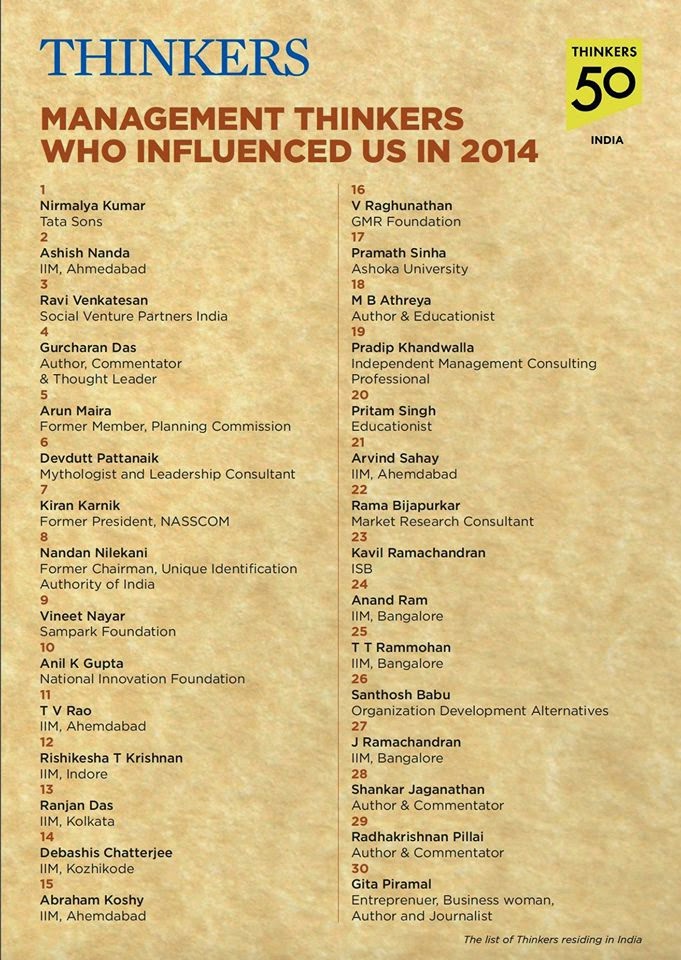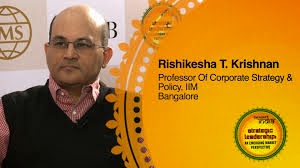This is the catchy title of the new book by Professor Gerard
Tellis, Professor of Marketing at the Marshall School at the University of
Southern California (USC). Professor Tellis has been studying innovation for
many years, straddling rigorous research approaches, practitioner-oriented
books and useful tools (such as for benchmarking your innovation culture and a
model for predicting disruptive innovation).
The Core Question
This new book is driven by a question that has inspired
several studies in the past – “Why do great companies fail?”
Other recent books on this subject have come up with varied
answers. In the most prominent of these, Jim Collins (of “Good to Great” and
“Built to Last” fame) charted five stages of decline: hubris born of success;
undisciplined pursuit of more; denial of risk and peril; gasping for salvation;
and, finally, capitulation to irrelevance. A recurring theme in Collins’
perspective is how failure is driven by a lack of discipline – forgetting your
core purpose or values or going headlong into something for which you lack the
resources, passion or the ability to achieve a competitive advantage.
Another prominent failure book, “Seven Ways to Fail Big,” by
Carroll and Mui identifies stubbornly staying the course (basically, inertia),
betting on the wrong technology and moving into a new business that is not
aligned with your competencies (even though it may appear to be) among the major
ways of failing.
But for Tellis, this question has a simple answer. Great
companies fail because they suffer from the incumbent’s curse. Their success
leads to complacency, and they fail to continue to innovate. Examples are many
– Intel with a market share of 85% in the microprocessor market and a peak
market cap of $464 Billion has only a 1% market share in chips for mobile
phones. With worldwide PC sales declining rapidly, it is clear that Intel has
missed a trick or two. Kodak, Sony and HP are other companies that Tellis cites
to make his point.
How do you combat the Incumbent’s Curse?
Tellis has a simple model to overcome the incumbent’s curse.
Essentially, his answer, as reflected in the title of this book, is to create a
culture for unrelenting innovation. According to Tellis, this requires three
atttitudes and three practices.
The three attitudes required to create a culture for
unrelenting innovation are:
- A willingness to cannibalize successful products
- A focus on future mass markets
- Embracing risk
And, the three practices are:
- Empowering product champions
- Building incentives for enterprise
- Nurturing internal markets
Several Questions
As with many books that promise to explain success or
failure, this book raises several questions Consider the third practice to
overcome the incumbent’s curse: nurturing internal markets. Go back to two
examples that Tellis himself gives: Kodak and HP. It is well known that Kodak
which missed the digital photography bus was one of the pioneers of digital
photography. And, HP invented a tablet of its own way back in 2005 though it
was Apple that finally created the market for tablets. In these cases, the problem doesn’t seem to be with the
ability to invent or come up with new ideas. The internal market for ideas
worked, but the companies concerned failed to exploit what they created.
Of course, Tellis would argue that internal markets for
ideas need to be combined with his first attitude – the willingness to
cannibalise successful products. But, the issue is that everyone knows that at
some point of time a company needs to be willing to cannibalise its successful
products. The more difficult question is when. The “take off” of digital
photography had to wait till a number of other supporting elements were in
place. These include the availability of broadband internet connections at low
cost; a sharp decline in the cost of storage; photo-sharing sites on the
internet; and the integration of high resolution digital cameras with commonly
available devices like the cellphone at low cost. In hindsight, it’s clear now
that there was a point at which Kodak should have embraced digital photography,
but remember that there was a big lag before digital photography came of age.
Besides, as Clayton Christensen argues so persuasively in
the Innovator’s Dilemma, getting a successful business to imperil one of its
star products is not a reasonable ask. Inertia can often be a rational response
– that’s how companies build and sustain a successful business.
In this context, one could argue that Gary Hamel’s thesis in
“Bringing Silicon Valley Inside” is relevant – companies need internal markets
for resources as well as ideas if new ideas are to get to the market. (To be
fair, Tellis does not restrict the notion of internal markets to ideas, but I
wish he had dwelt more on how to make internal markets work.)
Besides, many companies have enlightened managements that
know they need to embrace the “next big thing.” Remember that it was Andy Grove
of Intel who popularized the notion that “Only the Paranoid Survive.” Yet, it’s
the same Intel, that is today struggling to combat the steep decline in the
number of PCs sold.
I can’t think of too many companies that have defied the
incumbent’s curse. Even if they have, it’s not been a smooth process. IBM comes
to mind – but, the company had to face a crisis before Louis Gerstner could
come and re-position it as a high-end services company.
How relevant is the Tellis thesis to Indian companies?
Like many books written in the US, this book seems more
relevant to high technology companies than to the typical large company in
India in a more traditional industry. But there is one industry that should
really take the Tellis thesis seriously - the Indian IT services industry.
Clearly, IT services is no longer what it used to be. Most
large companies (the main clients of Indian IT services companies) have already
exploited the immediate and obvious advantages of offshoring and outsourcing.
There is no apparent trigger for the next round of growth.
But, in spite of sitting on huge piles of cash, Indian IT
services companies have been unwilling to embrace risk or empower product
champions, two key elements of the Tellis mantra. Even when companies appear to
do so, from outside it looks like one step forward and two steps back. I hope
the recent news report in the Economic Times that NRN plans to spin off the Infosys
Products and Platforms business is true – if it is, then this would be a
momentous step in the right direction and indicate that Indian companies are at
last willing to take the bull by the horns.
Concluding Comments
Culture is often a residual explanation for business
phenomena – when all else fails, culture is invoked as an explanation. But this
book is different. Not only does Tellis provide rigorous research to support
his arguments, he has several fascinating cases and stories as well, including
those of well-known companies such as Toyota, Facebook and Pfizer. Reading this
book would be time well spent for anyone interested in the theory and practice
of innovation.
(The views expressed here are personal.)



















No comments:
Post a Comment